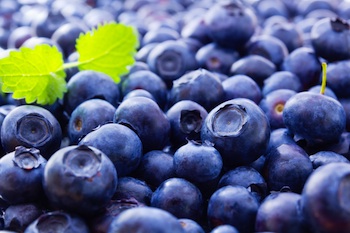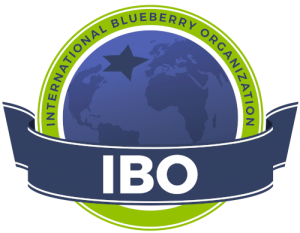When consumers crave tasty, healthy and convenient foods, scientists at the NC Research Campus (NCRC) and the New Zealand Institute for Plant & Food Research want them to think of berries. Small, portable, delicious and extremely nutritious, they know that berries are nature’s original “go to” health food.
They also know that positioning berries as a “go to” health food starts with expanding the existing dossier of scientifically-validated health claims. Scientists from both research centers met at the NCRC recently to do just that. They shared research findings that provide more evidence that the phytochemical content in berries benefits cognition, the immune system, inflammation control, human performance and exercise recovery as well as reduces the effects of health conditions like asthma and food allergies.
“This was a particularly intense scientific exchange,” commented Mary Ann Lila, PhD, director of the NC State Plants for Human Health Institute (PHHI) at the NCRC. “I go to a lot of berry and health-related meetings worldwide, but I was amazed at how much new, never before presented research angles and trajectories were coming out of these presentations and discussions. There was an astounding level of complementary research approaches discovered, and we realized some unique synergies that could come out of our collaborations.”
TC Chadderton, Plant & Food Research’s operations manager for food innovation, added, “The goal of the workshop and our scientific collaboration is to bring leading research groups together to align our research programs and share approaches that will help the berry industry in both countries.”
Industry Applications
In the US, strawberries alone are a $2.4 billion business followed in value by blueberries, raspberries and blackberries. The berry industry in New Zealand, which includes blackcurrants, blueberries and strawberries, is valued at $100 million. The New Zealand government and food producers are taking a renewed interest in berries, which is why they sent Jarrod Robinson to represent them at the workshop.
“I represent a collective of indigenous growers and horticulturists who are working together to respond to a high-value nutrition challenge from the New Zealand government,” commented Robinson, who is the new product development manager for Kono, a New Zealand company that grows apples, kiwifruit, pears and hops and also produces seafood and wine. “We want the best berries to grow on our land, and we want the science behind the crops to really understand what these berries can do as we develop the whole commercial continuum from growing to consumer products with health claims.”
Scientists discussed post-harvest technologies that preserve nutrient and phytochemical content as well as improved breeding methods that maximize genetic traits, all of which contributes to value-added berry varieties for producers to grow and consumers to enjoy.
Industry applications extend to new product development. Lila, whose relationship with Plant & Food Research started in 1999, presented a technology she helped develop that fuses polyphenols with protein flour to create a functional food ingredient that can be added to products from snack bars to cookies to improve their health benefits.
Collaboration Continues
The joint meeting also presented scientists like Roger Hurst, PhD, Science Group Leader of the Food & Wellness Group at Plant & Food Research and adjunct professor at Massey University, and David Nieman, DrPH, director of the Appalachian State University Human Performance Laboratory at the NCRC, with a chance to showcase data from a collaborative study conducted with students at Queens University in Charlotte, NC last year. The study, which PHHI and Dole Food Company are also part of, examined the influence of berry polyphenols on physiological adaptations to high intensity exercise training. As a second phase of the research, Hurst and Nieman are planning a metabolomics study and arranging for a second visiting scholar from New Zealand to work at the NCRC.
“Both organizations are seeking scientific innovation that leads to improved fruits and extracts and a better understanding of the health benefits of berries,” Nieman said. “In the end, that benefits growers and people of all ages who want healthy and convenient food options.”
But a collaborative research study and one workshop are only the first steps toward convincing consumers that berries are the “go to” health food. Plans are already underway for a follow-on 2016 workshop in New Zealand, involving NCRC scientists and a larger contingent of NZ food producers.
11/05/15
Photo: www.shutterstock.com
Source: North Carolina Research Campus

